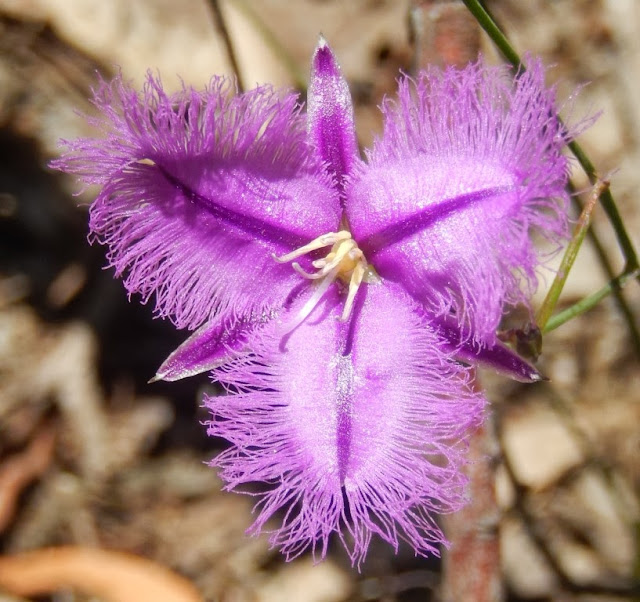Cruden Farm opened its gates 2 or 3 weeks ago and beckoned for one reason: I wanted to experience again (and carry away a good photo of) that sinuous avenue
of whitish gum trees. Designed by Edna Walling in 1930, and one of her best
legacies (along with the garden at Mawarra which has amazing bones), it is superb,
yet I remember it was derided – by other students - when I was studying
horticulture in the late 1980’s.
Hopefully they
have changed their minds.
But are they
lemon scented gums as claimed (and suggested on her plans)? They are beige, not white, and some very
dappled, and not too tall; they look like the terrific spotted gum (Eucalyptus maculata). Surely lemon
scented gums would be too tall and out of proportion (while these sit
perfectly)?
Cruden Farm has
some other good ingredients: the walled garden (nice within, but with some shade-loving
perennials (like Lady’s Mantle) mistakenly placed in full sun), some huge
trees, some cool green spaces, the placement in the landscape. But it’s a
strange mish mash with its plonked-down walled garden (hard to relate to the
rest) and most of all, that rose garden.
But is Cruden
Farm a sacred cow? Am I allowed to criticize it?
(Critiquing
gardens has barely begun elsewhere and is regarded as suspect if not terribly
impolite in Australia; but how else to regard gardens as art?)
Actually it’s
only the rose garden that really jarrs,
sitting uncomfortably amongst the green, with some odd bits of hedge, indigestible
with its surfeit of blooms. But…it’s the rose garden where people wandered
most, intoxicated by colour, pointing out blooms to their friends. (`I used
to grow that.’ `Do you remember that one?’)
And the
relevance to my own little patch? Well, once I dreamed of a similar avenue to
my house, but I have a cottage, really, a 2-bedroom cedar house (see below). It’s just not
a good fit. A grand design may not be required, precisely, but a certain size
and presence is; Cruden Farm has this.
(To fire
another volley, in another direction, to another family who have very kindly
opened their garden gates: Musk Cottage does not; anything called calling
itself cottage looks silly in 10 acres of gardened grounds. Our wild bushland, by contrast, is anything but groomed.
And there is a
self-conscious wooden cottage - with dormer windows - not far from here which is rather pretty but, as
if the owners have had a windfall, a heavy rotunda, Victorian mansion-worthy, sits
in the back garden where – sadly – all can see it. It’s a great reminder to
keep it all pitched to the same level.)
So what if I
was stubborn, and planted that avenue, what then?
I think the
visitor would be let down, at its end, by the country entrance to the home and
garden: carport, wood shed, small home. No stately home, no superb circle of
grass (great for turning cars as well as beauty and saying here the purpose changes); and that small (if artistic) gate to
enter the home garden. In time, I hope this person will not be let down by my
vision of the garden: beauty, interest all year, and strong ideas underlying the
garden.
What to do?
Our sweetly
curving drive is just right as it is, of course. It appears to wind through rough
forest – a little thinned – and then our 2-storey cedar cottage is a welcome
sight, sitting tightly on the slope, and our purple gate is a beckoning portal
into the garden.
To add a grand
avenue would be downright silly.
On our slope we
have a small turning circle and it’s filled with mature gums and indigenous
plants; good habitat on our Land-for-Wildlife property; this links home to
property nicely.
Our scotch egg
of home garden – pretty flowers and seats near the house; hens, edible patch
and orchard below; surrounded by bushland with creek lower still – works
perfectly. Birds dart in, echidnas wander through, skinks make a home about
ours. Yes, wallabies eat my plants but the tranquility of our spot is
wonderful.
I wouldn’t swap
it for the world – or even that avenue.
Jill Weatherhead is garden designer, horticulturist
and principal at Jill Weatherhead Garden Design www.jillweatherhead.com.au) working
in Melbourne, the Dandenong Ranges and Victoria.












